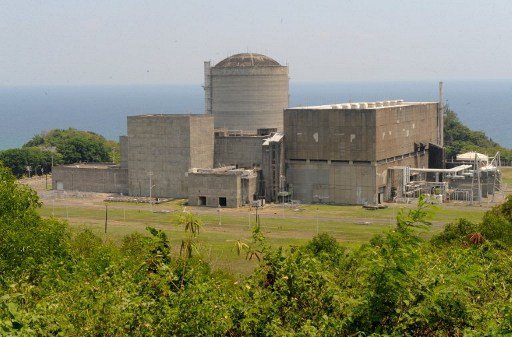Outsize cost—and risks
Perhaps it’s appropriate that news of President Duterte’s green light for the rehabilitation of the mothballed Bataan Nuclear Power Plant (BNPP) came in the midst of the public outrage over the Supreme Court’s upholding of the planned burial of the dictator Ferdinand Marcos’ remains in the Libingan ng mga Bayani. If there is an enduring symbol, after all, of the staggering plunder that marked the Marcos regime, the concrete monstrosity sitting on 389 hectares of the coastline in Morong, Bataan, more than qualifies.
From the beginning, the BNPP was a magnet of corruption and mismanagement. When Marcos decided to develop nuclear power in the wake of the 1973 oil shock, two international energy companies came forward with their proposals: General Electric with a highly detailed $700-million project bid, and Westinghouse with a lower bid of $500 million that was said to be curiously short on specifications.
Article continues after this advertisementMarcos chose Westinghouse nevertheless. Construction of the plant began in 1976, and by 1984 the project cost had ballooned to P2.3 billion, funded by foreign creditors. After Marcos’ ouster in 1986, President Cory Aquino’s administration decided to scrap the plant based on a host of safety and environmental concerns. The Philippines would spend the next 30 years paying off the BNPP debt, representing its biggest international credit obligation for over a generation.
Why did the cost skyrocket by as much as 400 percent? Primarily because Marcos and his cronies saw in the project another means to enrich themselves. Up to $80 million was reportedly forked over in kickbacks by Westinghouse; Marcos was said to have received his share through his crony Herminio Disini. According to a report in The New York Times, Disini’s commission was “5 percent of the value of Westinghouse’s part of the project” and “Marcos was to get 95 percent of Disini’s fee.” So flush with cash was Disini that he was able to buy a castle for himself in Vienna. In 2012, the Sandiganbayan ordered him to return $50.6 million in commissions that he amassed from the project.
Because the power plant’s construction was riddled with malfeasance from the start, the end result was as rotten. An inquiry would reveal that the BNPP was the height of shoddy construction, built over geologically unstable land and with over 4,000 defects. While its promise of 621 megawatts of electricity would have benefited only about 15 percent of Luzon’s population then, the risks were outsize: The 1979 Three Mile Island meltdown in the United States, and the 1986 Chernobyl disaster in Russia, had shown that even the most technologically advanced countries in the world struggled against the overwhelming dangers of a nuclear accident.
Article continues after this advertisementThe Fukushima incident in 2011, in which Japan also had to deal with deadly radioactive fallout following an earthquake and tsunami, once again underlined the dangers of a nuke plant accident. Japan, an industrial powerhouse, continues to deal with the aftereffects of that devastation—a 20-mile exclusion zone, for one, that has turned once-thriving communities into no man’s land. A recent report also says Fukushima radiation continues to leak into and contaminate the Pacific Ocean, five years later.
What would possess the President to consider reviving the BNPP, given its sordid history, its plethora of risks, and the enormous estimated rehabilitation cost of $1 billion? What studies, if any, were commissioned before the policy decision to reactivate the plant was made? Or is this another of the President’s gut decisions, made without adequate consultation with his Cabinet and the proper experts in the field? He has indicated he wants to revive such other Marcos-era hallmarks as the Philippine Constabulary and even, alarmingly, the suspension of the privilege of the writ of habeas corpus. This nuclear plant built by Marcos would not be out of place in that lineup—but only at the expense, once again, of the Filipino people.

















